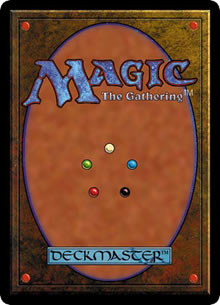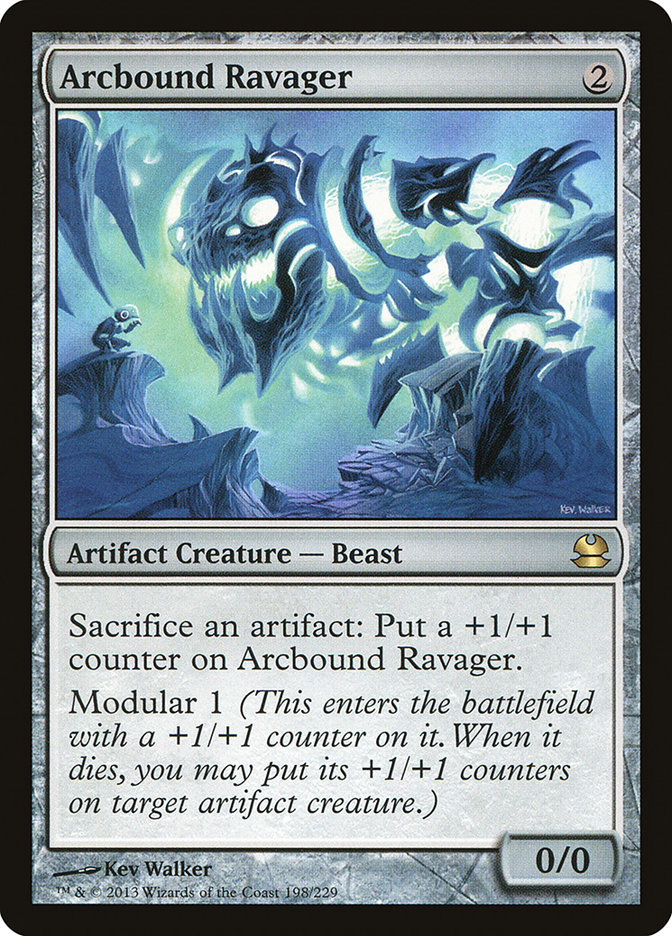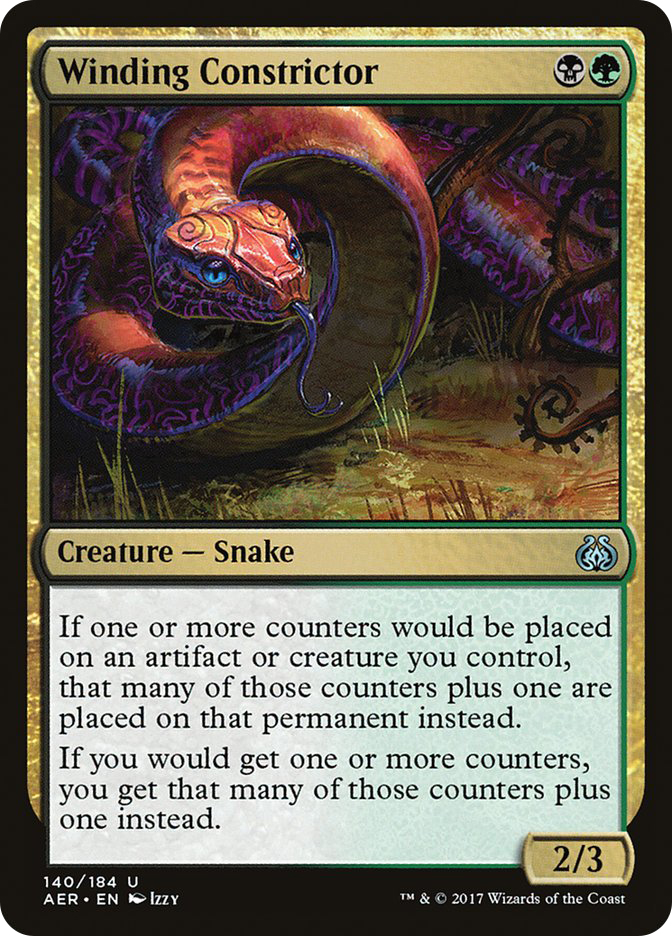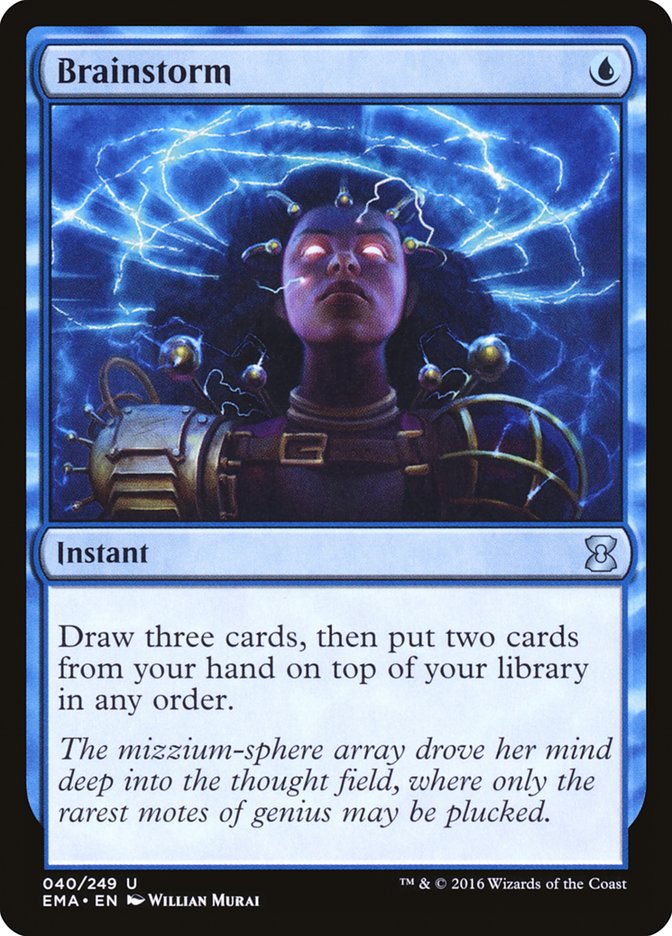#SCGKY
is upon us! Despite being masked as a relatively ‘normal’ Magic tournament,
team events add entire other layers to some of the less tangible aspects to
Magic–inside and outside of the game.
I’ve touched on
some of the strategy involved in team tournaments and how the inclusion of
teammates can affect the way that people approach the game…but what about
in a non-unified format? People tend to think in a way that is clouded by
their perceptions of what they’re ‘supposed’ to do.
Some of them are true. Some of them aren’t. Not everything is going to work
every single time, but it’s better to have some semblance of understanding
of what one needs to do to succeed and what they should eschew in order to
avoid failing.
Seating in and of itself has its own list of aspects that make for a fun
sub game. For some teams, all three players are going to be equally
skilled…but what if they aren’t? Rather than spending a few thousand
words on all of the various ways teams can seat their lineup, I’m going to
be focusing on the middle seat: Modern.
Modern being in the middle seat is incredibly fitting; it’s the halfway
point between Standard and Legacy, chronologically speaking. This means
that the Modern pilot is most likely to be able to help either their
Standard or their Legacy teammate, and the easiest person for their
teammates to offer assistance.
Depending on the direction of the polarity, this is going to lead to a
portion of teams putting their decidedly-strongest player in the middle or
their weakest player in the middle. This is going to help the team work
together without eating too much time off the clock or forcing teammates to
leave their game in order to assist somebody else who may be unsure of a
certain line.
Perceived teammate strength aside, what other thoughts are going into
preparation and positioning for the event? Deck selection! Modern being as
wide open as it is means that there isn’t necessarily a single right or
wrong archetype, but there are a lot of things to consider for the upcoming
event.
Coming up with a list of things that you do and don’t want your deck to
accomplish is one of the easiest ways to narrow down which deck is the
right deck. Despite me playing Legacy this weekend, my teammates and I work
together to figure out a configuration of decks that everybody is
comfortable having their results rely on.
Speaking of decisions that everybody is comfortable with…
Do: Recognize that people are more likely to make ‘safer’ deck
decisions.
There’s only one thing worse than incinerating your tournament with a poor
deck decision: incinerating your friends’ tournament with a poor deck
decision.
The fear of preventable failure leads to people making significantly safer
deck decisions than they otherwise would. In this context, this is to say
that people don’t generally bring glass cannon decks or decks that are
incredibly reliant on the metagame.
The safer archetypes are going to be the mainstays of the format. There’s
generally going to be a higher concentration of the fairer decks that play
‘in the middle.’ Midrange decks that seemingly reward playskill and
navigation through a match, rather than some outside factor; be it
matchups, die rolls, or RNGesus.
This means that it’s going to be better to play decks that are good against
Inquisition of Kozilek, Mana Leak, and Thought-Knot Seer. What does that
mean? Look to these decks:

Each of these cards has an entire deck associated with fighting the way
that midrange decks are trying to fight: their interaction.
Creatures (10)
Lands (27)
Spells (23)

Wizards of the Coast has made a firm stance against land destruction. This
results in the threats associated with cranking lands on the battlefield
getting better, and the hate cards for the strategy stagnating, in terms of
power level.
Valakut decks are hard for the midrange decks to beat because they don’t
need to play spells. If there isn’t an impressive clock coming with
whatever discard spells or countermagic the interactive deck plays,
eventually the Valakut deck is just going to have enough lands to start
chaining free Lightning Bolts off of their Mountains until somebody is
dead.
Creatures (6)
Planeswalkers (6)
Lands (18)
Spells (30)

The Eldrazi-free variants of Tron aren’t trying to fool around with the
lower end of the curve. Rather than winning with exclusively lands, they
just go so far over the top of the fair decks that they end up losing to
card quality.
Creatures (24)
- 3 Golgari Thug
- 4 Stinkweed Imp
- 4 Narcomoeba
- 4 Bloodghast
- 4 Prized Amalgam
- 4 Insolent Neonate
- 1 Haunted Dead
Lands (20)
Spells (16)

“You Fatal Pushed my Bloodghast? Nice, I’ll play a land. Get it back,
triggering Prized Amalgams.”
The explosiveness and resiliency of Dredge make it a great choice against
the various fair decks that people bring to these events. The biggest issue
here is hate cards, but they probably won’t draw those anyway, right?
Right?!
Creatures (11)
Lands (18)
Spells (31)

Zero of your removal spells do anything. If you can beat a 7/5 with first
strike, reach, lifelink, trample, totem armor, and vigilance without
removal, you’ve earned it, champ.
Don’t: Be afraid to play the fair things.
These fair decks have stuck around in the format for a reason. Death’s
Shadow has so many flavors because being a fair deck with multiple unfair
and undercosted finishers is a great place to be.
There are several different approaches to the deck, and if you’re already
comfortable with a flavor of Death’s Shadow, have at it.
Creatures (12)
Planeswalkers (3)
Lands (18)
Spells (27)

Death’s Shadow is effectively today’s Jund, and it being 52% against most
of the field is a good enough reason to pilot it, as long as you’re
competent enough with the deck to keep that percentage above 50.
If you aren’t confident in your Jund-ing abilities, just be a little bit
grindier. Snapcaster decks can either be more controlling…
Creatures (2)
Planeswalkers (3)
Lands (26)
Spells (29)

Or they can even play well with the aforementioned one-drop 13/13…
Creatures (15)
Lands (19)
Spells (26)
- 4 Lightning Bolt
- 2 Mana Leak
- 4 Serum Visions
- 1 Terminate
- 4 Spell Snare
- 4 Thoughtseize
- 4 Thought Scour
- 1 Kolaghan's Command
- 2 Fatal Push
Sideboard

Nothing’s wrong with a good ol’ fashioned two-for-one, and Snapcaster Mage
decks are one of the most efficient ways to do it in the format. Don’t
underestimate its ability to do an Ambush Viper-brings-the-beats impression
against the unfair decks either.
Don’t: Bring decks that are easily picked apart by fair
decks.
Affinity is a great deck. It’s one of my favorite things to play in Magic,
and Inkmoth Nexus is likely my single favorite Magic card.
That being said, it tends to struggle against the fair midrange decks, and
that makes me hesitant to come within a mile of registering it for this
tournament. A room full of Kolaghan’s Commands, Ancient Grudges, Kataki,
War’s Wages, and Snapcaster Mages just doesn’t seem like a good place to be
casting Vault Skirge.
Do: Have a plan for the non-interactive archetypes.
Many people in the tournament are going to be “the friend who got stuck
with Modern.” These players will likely be playing the more streamlined
decks that don’t require as much format knowledge. Honestly, a majority of
these decks are completely justifiable, but if I were to want to make sure
to have my bases covered, the biggest decks that I’d want to compensate for
are:
Creatures (14)
Lands (20)
Spells (26)
Sideboard

It’s powerful, it’s relatively cheap, and it doesn’t take too much to
understand counting to twenty, three points at a time. Jeff Hoogland lives
and dies by the idea that a Modern deck has to be able to beat a first turn
Goblin Guide in order to be respectable, and it really holds true in these
kinds of events. Playing an incredibly painful manabase and very few
sources of lifegain will lead to punishment. Trust me,
my team relied on this idea for the last team Open.
.
Creatures (5)
Lands (20)
Spells (35)

Whenever a friend asks about getting into Modern, Ad Nauseam is always one
of the first places to point. The deck is pretty good at
channeling The BeeGees
until it can finally finish off the opponent with its namesake card. The
deck being able to win through infinite combos combined with its resiliency
to countermagic via Boseiju, who Shelters All and discard via Leyline of
Sanctity make this a popular choice for newer players in the format.
Creatures (7)
Lands (18)
Spells (35)
- 4 Sleight of Hand
- 4 Serum Visions
- 3 Peer Through Depths
- 4 Gifts Ungiven
- 4 Desperate Ritual
- 3 Remand
- 1 Empty the Warrens
- 2 Grapeshot
- 4 Manamorphose
- 4 Pyretic Ritual
- 2 Past in Flames
Sideboard

A chunk of people prefer something more akin to solving a Rubik’s Cube with
Magic cards instead of playing chess. The most recent iterations of Storm
are redundant to the point that they can fight through a few discard spells
or counterspells, and the importance of their creatures cause tension for
players trying to value their removal versus counterspells and hand
disruption in the matchup.
The difficulty associated with playing against the archetype is going to
draw a good portion of players to the deck, and the clever feeling packaged
with Gifts Ungiven is going to draw a crowd all on its own.
Don’t: Enter the event with a deck you’ve never played before.
Modern being a format that rewards familiarity is going to be pushed to the
extreme this weekend. On top of the usual expertise associated with a
portion of Modern’s best, that specialty is going to be pushed to the
extreme. There will be teams with a Legacy specialist, a Modern specialist,
and a Standard specialist. The more successful your squad is, the more
likely it is that you will all have to face a group of people who know
their deck, that deck’s place in the format, and their role in any given
matchup. Inside and out.
This is going to lead to small edges compounding one way or the other even
faster than they normally would. The draw to team events is that they tend
to mitigate variance and increase the odds of the more skilled team
winning.
This translates to a significant amount of weight being put on each player
to be as knowledgeable as possible in their given format, in order to do
one of two things: Increase the gap between themselves and a lesser player;
and close the gap between themselves and a better player.
The short and simple version is to find the balance between a deck
complementing your strengths as a player, having a reasonable spot in the
metagame, and being an archetype that you’re familiar with.
Do: Your best to enjoy yourself.
Team events are a blast. Winning isn’t everything, and spending all day
sitting next to your friends makes the fun of a Magic tournament even more
enjoyable. It makes the victories sweeter and the losses easier to bear.
Nobody is having to wait for others to finish their rounds or give them a
ride home.
If someone messes up, don’t ruin them for it. People make mistakes, and
berating your friends isn’t going to do you any good. I’ve played against
some opponents who took losses in stride and some who instantly began
pointing fingers at one another while the discomfort at the table
snowballed into something completely unmanageable.
Louisville has some great places to eat, which means there are
great places to commiserate one another after defeat, or celebrate a
successful tournament finish. (If you visit Hammerheads, get the
venison burger and duck fat fries. You’re welcome.)
What are your thoughts on approaching a team event? What are you doing
differently? The same? Make sure and tune in to SCG Tour coverage for the
event! These are some of the best events to watch, and our coverage team is
top-notch.
Hopefully
#TeamSnuggleQuest
can properly apply this information and wrangle us up a trophy this
weekend!




